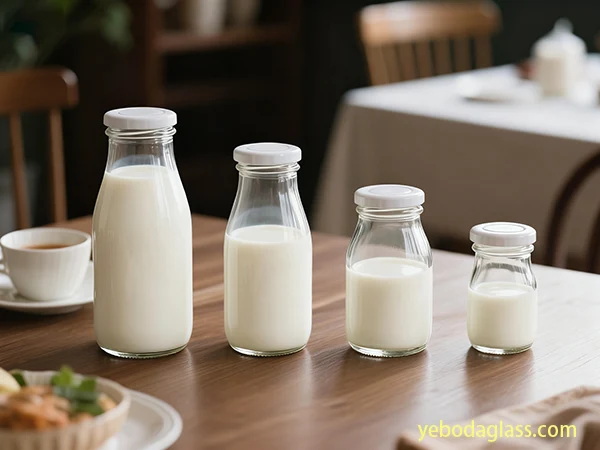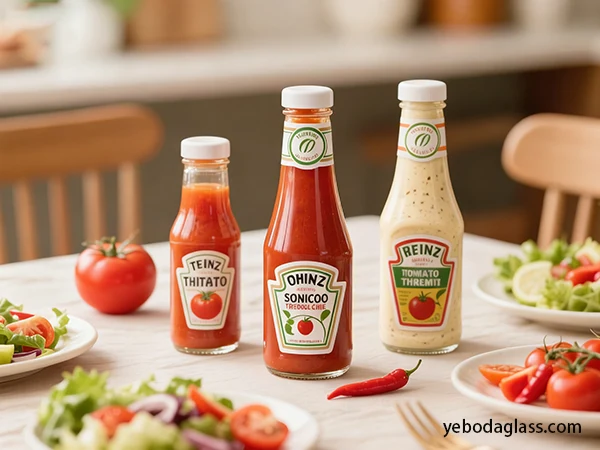소개
Mechanical method: physical peeling

If you do it manually, use a plastic scraper, an old credit card or a blade to scrape off the softened label and glue, being gentle and not to scratch the bottle; you can also use a scrubbing pad or steel wool to remove the residue. In industry, there are automatic label removers that can process 600 bottles per hour, and high-pressure water jets that use water to wash off labels, but you have to pay attention to safety.
Other methods and trends
Enzymatic methods are very environmentally friendly and rely on biological enzymes to decompose glue, but they are still under development.
The new “on-demand debonding” technology can make the glue ineffective under specific conditions (such as heating and power supply), making it easy to recycle; laser peeling is also promising, precise and does not damage the bottle, suitable for industrial use.
Scaling and post-processing cleaning - adjust the solution as needed
The efficiency of label removal is not only related to the method, but also to the number of bottles processed and the purpose of the bottles after the labels are removed.
Optimization strategies for different processing volumes
DIY / small scale (a few to dozens): using hot water soaking, heat guns, household solvents (vinegar, cooking oil, baking soda paste, acetone, WD-40) plus manual scraping, economical and effective.
Medium scale (tens to hundreds): Consider buying a semi-automatic label removal machine, or make a simple soaking and cleaning line yourself, assisted by mechanical scraping.
Industrial scale (hundreds to thousands per hour): A professional label removal line is required. Bottle Systems can provide custom lines that process 1-3 pallets of bottles per hour, using mechanical and optical technology; fully automatic machines can process 300-6000 bottles per hour. High-pressure water jets and future laser stripping technologies are ideal.
Post-processing cleanliness requirements: Varies with use
There are now labels that can wash off glue, that are clean to peel off, that could lessen fees and increase recycling charges.
Food/beverage reuse:
Thorough cleaning is crucial, and it is recommended to apply oil-primarily based solvents in place of harsh chemical substances to avoid residues that affect meals safety.
- Decorative use:
- Labels and any residual glue ought to be eliminated, otherwise it’s going to have an effect on the advent. Acetone, Goo Gone or oil-based removers work well to deal with the residue.
- Scientific/Pharmaceutical packages (consisting of glass vials):
- The requirements are very strict. Regulatory companies inclusive of FDA and EMA have unique necessities. Cleaning validation makes use of numerous analytical techniques. Even trace residues should be detected and removed to perfect levels.
Protecting the integrity of the bottle: Avoid harm
Thermal surprise: Rapid temperature modifications, specifically from cold to warm, may additionally motive glass bottles to break. Let the bottle heat up slowly earlier than soaking in hot water.
- Surface damage: Scratching too difficult or using robust corrosive chemical compounds may additionally go away scratches or etching on the glass floor, affecting the appearance and reuse cost. For example, CLR can eliminate cussed labels, however it will corrode the glass.
- Environmental impact and safe operation - handle responsibly
- While pursuing clean bottles, environmental impact and operational safety cannot be ignored.

Environmental footprint: from waste to energy conservation
Waste generation:
Label materials, residual glue, and chemical emissions are all major wastes. Standard film labels, especially clear ones, can contaminate recycled glass, which ends up in road construction or landfill.
Recyclable labels:
“Washable adhesive labels” are easy to peel off, can reduce recycling costs by up to 45%, and increase recycling rates.
Ink and material issues: Ink on the label can contaminate the wash water that separates the label from the container.
Energy benefits of glass recycling:
Using cullet saves about 30% energy compared to melting raw materials, and each ton of glass recycled saves about 580 kg of CO2 emissions.
- Safety protocols: Protect yourself
- Chemical handling:
- Read instructions, wear gloves and goggles, work in ventilated areas, avoid inhaling steam and skin contact.
Thermal risks:
Avoid burns when handling hot water or using heat guns, and prevent glass bottles from breaking due to thermal shock.
- Mechanical operation: Avoid cuts when using scrapers or blades.
- High-pressure water jet safety: Industrial operations require strict procedures, wear waterproof work clothes, hearing protection and masks, and pay attention to equipment maintenance.
- How to choose the most suitable method? —— Decision reference Faced with so many methods, how to choose? You can follow the steps below:
Determine the type of label and glue: This is the most critical step. Paper labels and water-soluble glue are the easiest to handle.
Clarify the purpose and cleanliness requirements of the bottle: recycling, food packaging or decoration. The higher the cleanliness requirements, the more sophisticated the method.
Evaluate the processinency

For example, dozens of wine bottles are decorated, mostly paper labels and water-soluble glue, and hot water soaking and baking soda paste are very suitable; large beverage companies recycle millions of bottles, which is suitable for fully automatic machinery to removeLabeling machine or high-pressure water jet system.
Future trend: "black technology" for label removal
Label removal technology is constantly developing, and in the future it will focus more on efficiency, environmental protection and intelligence.
- “Debonding on demand” glue: automatically peels off under specific conditions (heating, power, specific solvents), simplifies recycling and reuse, and promotes the circular economy.
- Bio-based and soluble glues: With the emphasis on sustainable development, there will be more glues based on biomaterials, easily degradable or soluble.
Laser peeling technology is popularized: - after the equipment cost is reduced and the technology matures, it will be applied in more industrial scenarios, suitable for high-value or special-shaped glass bottles. AI and machine vision fusion:
improve automation accuracy and efficiency, accurately identify label position, and adjust parameters.
- Hybrid system: combine the advantages of different methods, such as soaking and softening before laser peeling, or enzymatic pretreatment plus mechanical removal, to improve the effect.
- This guide details various methods of how to remove labels from glass bottles, from hot water soaking to laser peeling, each method has advantages and disadvantages. Choosing the right method can not only keep the bottle clean, but also contribute to resource circulation and environmental protection. YEBODA is properly privy to the price of glass bottles and the significance of sustainable improvement. It is devoted to producing wonderful, long lasting, and superbly designed glass bottles, and considers quit-of-lifestyles treatment from the start of design. Choosing YEBODA’s glass bottles, you can not handiest get exquisite products, but also contribute to environmental protection, so that each glass bottle can play its most fee and circulate closer to a sustainable destiny together.
- 기계 작업: 스크래퍼나 칼날을 사용할 때 잘라지지 않도록 주의하세요.
- 고압수 제트 안전: 산업 작업은 엄격한 절차가 필요하며, 비닐복, 청각 보호 장비, 마스크를 착용하고 장비 유지 관리에 주의해야 합니다.
가장 적합한 방법을 선택하는 방법? —— 결정 참고
이렇게 많은 방법이 있는데 어떻게 선택해야 할까요? 아래 단계를 따를 수 있습니다:
- 라벨 및 접착제의 유형을 결정하세요: 이는 가장 중요한 단계입니다. 종이 라벨과 수산화 접착제는 가장 쉽게 다룹니다.
- 병의 목적과 깨끗함 요구 사항을 명확히 하세요: 재활용, 식품 포장 또는 장식. 깨끗함 요구 사항이 높을수록 방법이 복잡해집니다.
프로세스 인센티브 평가
예를 들어, 수십 개의 와인 병을 장식하면, 대부분 종이 라벨과 수산화 접착제로, 뜨거운 물에 담가기와 소다 분말 페인트가 매우 적합합니다; 대형 음료 기업은 수백만 개의 병을 재활용하며, 전 자동 장비로 라벨 제거 기계 또는 고압수 제트 시스템에 적합합니다.
미래 트렌드: 라벨 제거 "블랙 기술"
라벨 제거 기술은 끊임없이 발전하며, 앞으로는 효율성, 환경 보호, 지능에 더 집중할 것입니다.
- "요청에 따른 분리" 접착제: 특정 조건(가열, 전력, 특정 용매) 하에서 자동으로 벗겨지어 재활용과 재사용을 간소화하고 순환 경제를 촉진합니다.
- 생물 기반 및 용해성 접착제: 지속 가능한 발전에 대한 중점을 두면서, 생물 물질에 기반한 접착제나 쉽게 분해되거나 용해되는 접착제가 더 많이 나올 것입니다.
- 레이저 벗기기 기술이 보급됩니다: 장비 비용이 낮아지고 기술이 성숙해지면 더 많은 산업 시나리오에 적용될 것이며, 고가 또는 특수 형태의 유리 병에 적합합니다.
- AI와 머신 비전 융합: 자동화 정확성과 효율성을 향상시키고, 라벨 위치를 정확히 식별하고 매개 변수를 조정합니다.
- 하이브리드 시스템: 다양한 방법의 장점을 결합하는 것, 예를 들어 레이저 벗기기 전에 담가서 부드럽게 하거나, 효소 사전 처리 후 기계 제거와 같은 것을 결합하여 효과를 향상시킵니다.

결론
이 가이드는 유리 병에서 라벨을 제거하는 다양한 방법을 상세히 설명합니다, 뜨거운 물에 담가기부터 레이저 벗기기까지, 각 방법에는 장점과 단점이 있습니다. 올바른 방법을 선택하면 병을 깨끗하게 유지할 수 있을 뿐만 아니라 자원 순환과 환경 보호에 기여할 수 있습니다.
YEBODA는 유리 병의 가격과 지속 가능한 개선의 중요성을 잘 알고 있습니다. 아름다운, 오래 지속되는, 뛰어난 디자인의 유리 병을 생산하고 있으며, 설계 초기부터 생애 종료 처리를 고려합니다. YEBODA의 유리 병을 선택하면 멋진 제품을 얻을 수 있을 뿐만 아니라 환경 보호에 기여하여 각 유리 병이 가장 큰 가치를 발휘하고 지속 가능한 미래로 나아갈 수 있습니다.




